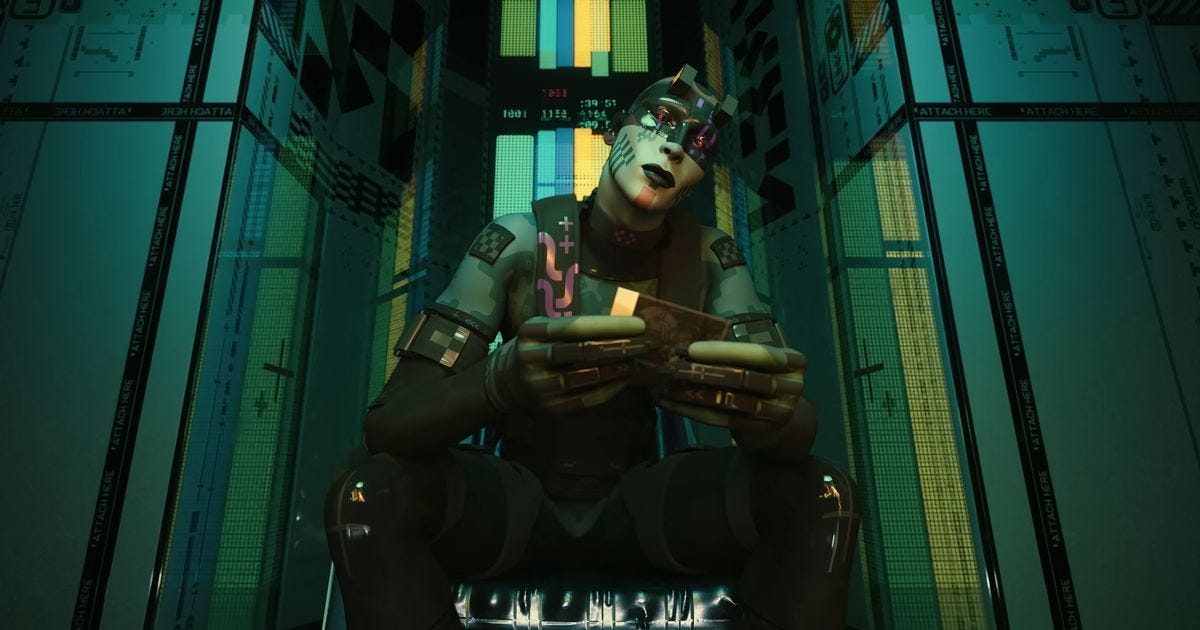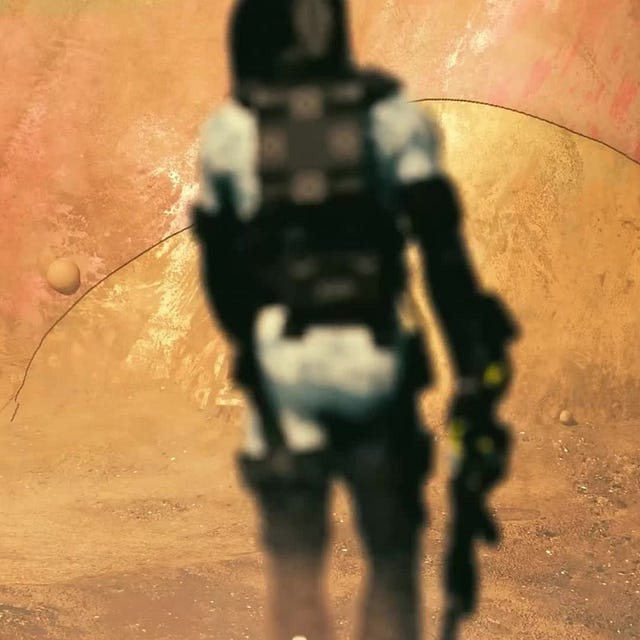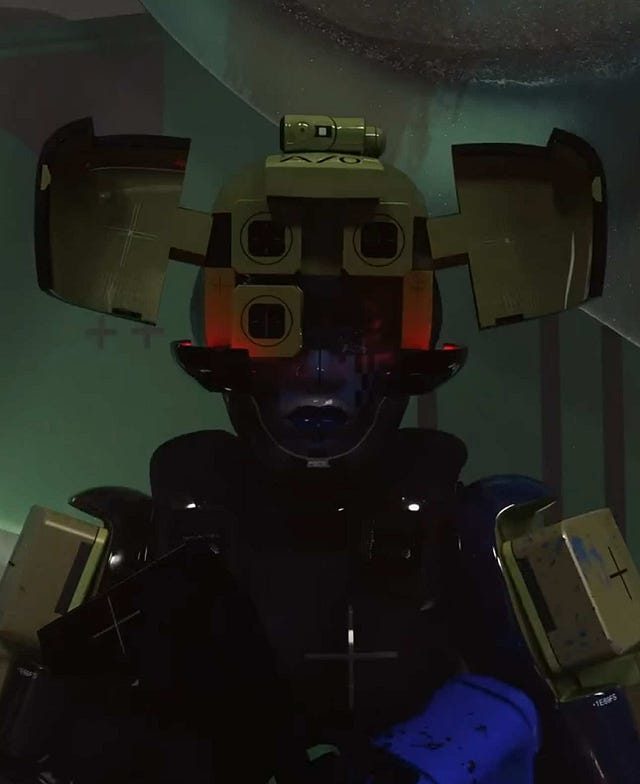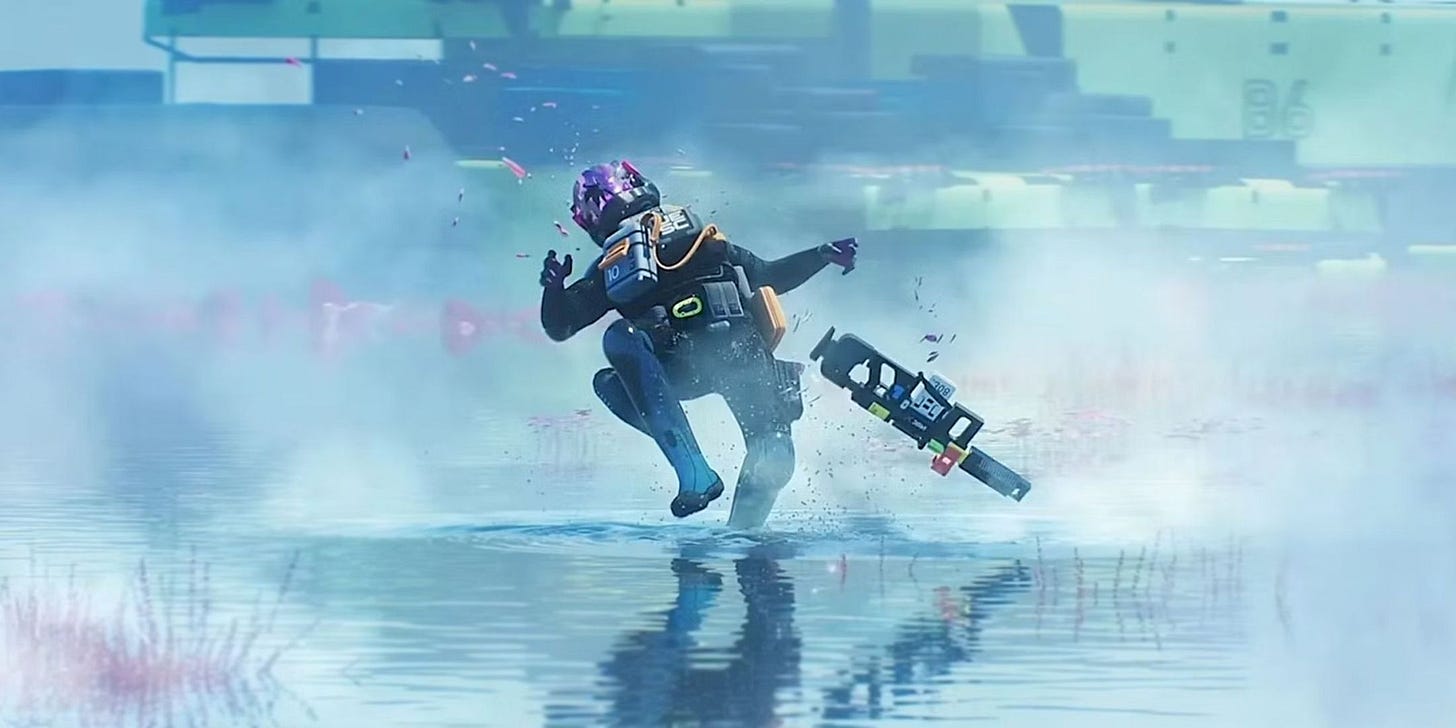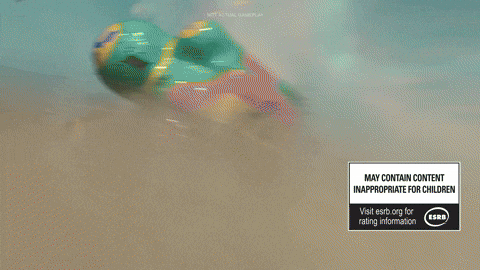I’ve been keeping my eye on Marathon since its trailer a year or two ago. I mean its got its visual aesthetic on absolute lock, and I’m sure if it put that much effort into the visuals, it will surely be doing the same for the audio. However, Marathon’s seemingly strong creative identity and aesthetic appears to be interpretated differently according to the fan-made content thats out there. Why are fans seeing this differently? What is the distincton between the game’s identity and the community’s perspective?
As a heads up, I’m aware of the art plagiarism issue as well as the news article suggesting Bungie are stopping all paid media. This article is purely about music’s role in game identity and I’m using Marathon’s marketing assets as an example, rather than a commentary on the game, the companies involved or their practices. Consider my praise of the aesthetic as a nod towards ANTIREAL’s impressive work.
What is Marathon?
How Marathon are designing their aesthetic.
….but that’s not what fans on TikTok think
Fan Refraction
1. What is Marathon?
Marathon is an upcoming sci-fi extraction FPS (first-person-shooter) developed by Bungie, set to release in September this year (maybe…) for PlayStation, Xbox, and PC. Drawing from the universe of Bungie's original 1990s Marathon trilogy, this new iteration reimagines the series as a PvPvE (player versus player versus environment) experience.
I’ve enjoyed everything that Bungie has put out so far, including the Halo and Destiny series, and therefore there’s a bit of bias here. I’m writing this substack having not played Marathon at all - which I think is important given that I’m making sense of pre-gameplay perspectives and community building using music.
2. How Marathon are designing their aesthetic.
Quick reminder - Art direction IMO is made up of both the audio and visual aspects and these go hand in hand.
If I put myself into the shoes of a potential fan pre-release of a game, I’m going to be given a few things to look at by the game company. My whole thing when checking these out is ‘what feeling do I get’ as well as ‘why am I getting that feeling’ - so its not complex, however it’s one step further. It’s probably because I’ve shattered all true emotions having to analyse music inclusion all the time for the last decade, but here we are.
Firstly, the visuals are striking and unique. With a combination of Bungie’s design team lead by Joseph Cross, cinematic direction from Alberto Mielgo of ‘Love, Death + Robots’ fame (and many more) as well as heavyweight inspiration and designs from ANTIREAL - it has created some tasty dreamy imagery.
Marathon’s YouTube is probably the best place to go to learn how they want to demonstrate their curated aesthetic. Their OST is uploaded here which includes artists like Ryan Lott of Son Lux, who’s futuristic, dark, industrial, electronic ambience mirrors the mysterious potential of Marathon and the subtext of its narrative.
The highest viewed video here is unsurprisingly their announce trailer:
To be honest, the 8 minute cinematic trailer is another important and impressive watch.
As soon as I saw the caterpillars co-operatively building the mechanical body, and the connotation of the ‘perfection’ of biology being a component in manufacturing something synthetic, with the 4 million K resolution, I believe the world building could be as impactful as the instant-dopamine colour palette my eyes got to feast on.
I’ve had to concentrate in order to spot the music choices made here for two reasons:
The visuals are distractingly impressive.
The music is so aesthetically accurate to what I imagine with gameplay like this that it’s almost hidden.
Outside of the ongoing backlash, both of these things are exceptional combinations of visuals to audio. If they keep up with the same impactful gameplay like Halo 4, Reach, or Destiny’s series had (love them all for story + graphics + sound design, come at me) AND it actually gets released, then I think we’re in for a treat.
The biggest curveball is the interpretations of the art style through fan-made videos on TikTok. Let’s investigate that.
3. ….but that’s not what fans on TikTok think
My theory here is that there are 2 types of aesthetics to a game. There’s the game aesthetic as the developers/publishers intended, and then there’s the community’s interpretation of it too. ‘Authored’ and ‘Refracted’ identities, respectively.
As the ‘save the date’ marketing started bubbling around on socials a few months ago, I noticed a fair few ‘fan edit’ TikTok’s where they were taking the visuals from the trailer and cinematics and overlaying their own content. Here’s an example:
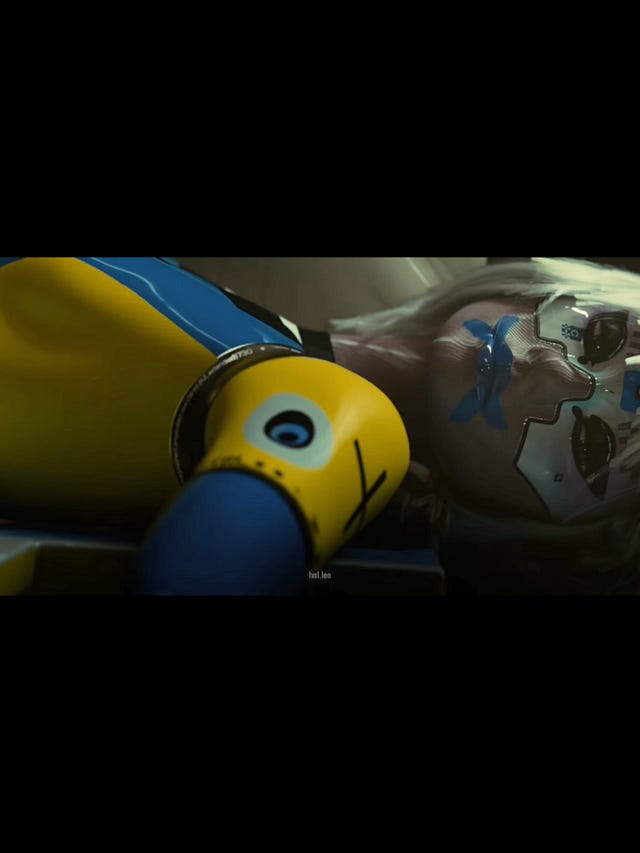
 Tiktok failed to load.
Tiktok failed to load.Enable 3rd party cookies or use another browser
In this example, TikToker’s are familiar with Radiohead’s ‘Kid A’ often being used alongside high quality, cinematic, sci-fi edits. I’d go as far to say that TikTok’s interpretation of ‘Kid A’ is no longer as the band intended, but how it has consistently been used inside of this platform and its new context applied. Tiktok does this because sounds serve the same function as hashtags, helping search and categorise themes. This is definitely a complement given how positively ‘Kid A’ has been used over TikTok.
If you’re a parent thinking your teenage child has an eclectic music taste - pair their playlists against TikTok’s charting tracks and you’ll likely see a pretty sizeable overlap.
So with this in mind, how does the game’s community and its fanbase communicate? Fans refract.
4. Fan Refraction
Yes that’s right I’m coming up with more terms. Brace yourself. Here’s my line of thinking.
If a game has a strong identity (both music and visual), it helps a fan figure out what is similar to the game as well as what is different. This gives the community an opportunity to transcend this game beyond its original context as it is clear what is new or not. Fans do this in may ways, through fan fiction, cosplay, and in this case - Fan Refraction.
Fan Refraction is a completely made up term given to non-commercial pieces of fan-made content where new music is used that reflects a personal interpretation, or even an outward expression, of the impact the game has had on the fan. I’d say this is a sub-category of User-Generated Content (UGC) and deserves to be separate as it has a specific origin and purpose for existing.
I believe that if a game does not have a strong visual or musical identity, it is less likely you’ll see Fan Refraction.
Here are 4 examples of how the cinematics of this game has been used in fan edits with completely different music associations.
Basement Jaxx - ‘Where’s Your Head At’ (Remix)
Tame Impala ‘New Person, Same Old Mistakes’
Pote Baby ‘It Is What It Is’
Leaving Time ‘Slip’

 Tiktok failed to load.
Tiktok failed to load.Enable 3rd party cookies or use another browser
Another example of Fan Refraction is Helldivers 2, and you can read my article touching on this here. I used the phrase ‘let the players choose’, and that stands up here in its more formally recognised form as Fan Refraction.
Going back to my definition of Fan Refraction, I used the word ‘non-commercial’ because if it was commercial - it would be an advert and therefore require clearance from the artist / record label / publisher etc. which is difficult to scale.
Instead, music (similar and different) on social media is explored and engaged with beyond the game through Fan Refraction, all of which can be celebrated and validated by the game. Marathon have been doing this by reposting a selection of the fan-made videos on their TikTok page.
So in a way, there is a very real strategy emerging from this. Lock in a strong identity, and celebrate/validate the fan refractions. Will we see this dual-identity strategy understood and nurtured in future games?
So…can you optimise this?
…Not really. As a game company, you can control your own authored identity of the game. Separately, you can ‘validate’ and ‘nurture’ the community by communicating and reposting - but it’s none of your business I suppose.
If I were a marketing director I’d use that categorisation to my advantage. Marathon has(/had?) the potential to encourage their community to run riot, which is a great way of having people engage with a game outside of playing it. Music used by the game and also by the community becomes a hashtag, and the data feedback from understanding and acknowledging authored and refracted identities can be an unspoken community dialogue worth exploring.
TLDR:
A game needs to have a strong aesthetic, so its clear what juxtaposes it. This gives purpose to the fans of reimaginging the world in their own way (like personalising) as well as the game still having a striking and defining presence in its own right. These two identities - authored and refracted - can exist in symbiosis.
This style of fan-made content I’ve named Fan Refraction. This uses music both curated by the game, as well as fan-made selections, as tools to showcase fandom and in turn use music like a ‘hashtag’. This categorisation may help games, artists and communities empathise and communicate better.





